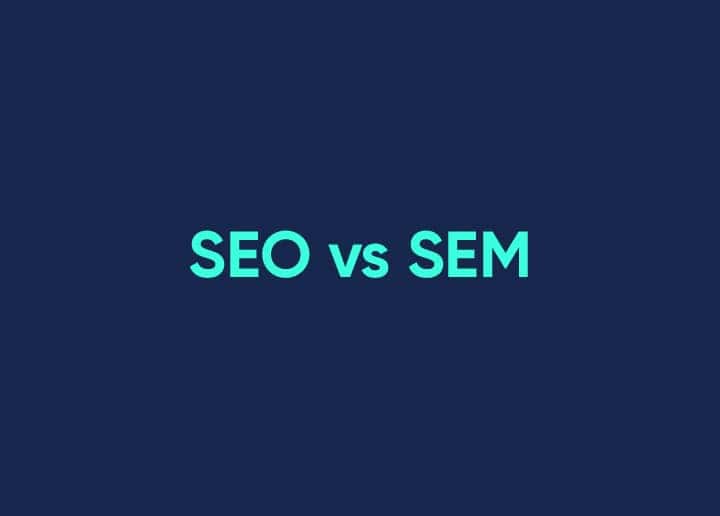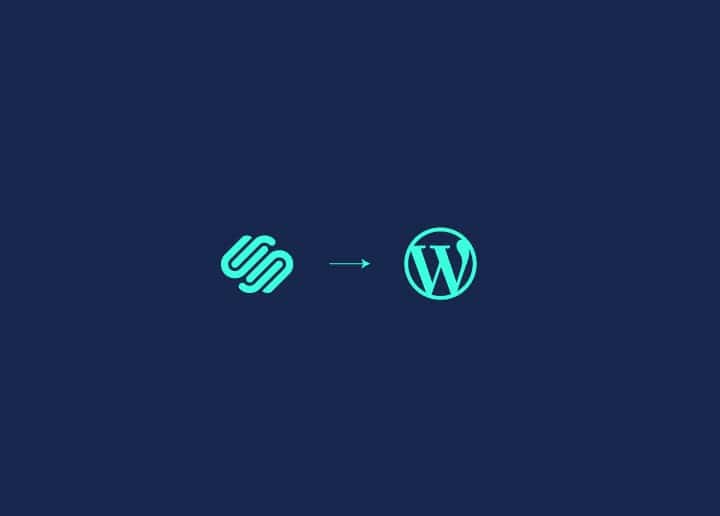If you’re looking to boost your website’s visibility, understanding SEO vs SEM marketing is essential. SEO improves your organic search rankings, while SEM combines SEO with paid search tactics like PPC. This guide will help you grasp their differences and benefits, ensuring you choose the right strategy for your needs.
Key Takeaways
- SEO focuses on enhancing organic visibility through on-page, off-page, and technical optimisation, while SEM includes both SEO and paid search strategies like PPC for immediate results.
- SEO is a long-term investment with lasting benefits, whereas SEM delivers quick visibility but involves ongoing expenses for every click.
- Integrating SEO and SEM in a digital marketing strategy ensures comprehensive coverage of search results, enhances brand authority, and optimises visibility and conversion rates through a unified approach.
Contents
Toggle1. Understanding SEO and SEM
SEO and SEM are essential tools in the digital marketer’s arsenal, each with its unique strengths and applications. The main goal of both SEO and SEM is to increase website visibility on search engines, but they achieve this through different means.
What is SEO?
SEO, or Search Engine Optimisation, is the art and science of enhancing web pages to achieve better rankings in organic search results. The primary goal of SEO is to rank organically on the first page of search engine results pages (SERPs) for specific keywords or phrases.
This involves various techniques categorised into:
- On-page SEO
- Off-page SEO
- Technical SEO
- User interaction signals
Various online businesses use SEO to solidify their expertise and authority.
Hire an SEO Agency to Optimise Your Website
Our team of experienced SEO professionals will tailor strategies to increase visibility and drive targeted traffic to your website.
What is SEM?
SEM, which stands for Search Engine Marketing, encompasses both SEO and a range of paid advertising tactics carried out on search engines. It is a comprehensive approach to maximising visibility and traffic.
In addition to SEO, SEM encompasses PPC (pay-per-click) advertising, where advertisers pay a fee for every click received on their ads. These paid ads appear at the top of SERPs, providing immediate visibility.
SEM campaigns can generate traffic almost instantly after launch, making it a valuable strategy for businesses seeking quick results.
Find out: Is SEO Worth it
2. Core Components of SEO
SEO comprises several core factors or components, each playing a critical role in improving organic search rankings. These components include
Keyword Research
Think of keyword research as finding the right search terms or phrases that people use to search for information online. By identifying popular and relevant keywords, you can tailor your website content to match what users are looking for. Tools like Google’s Keyword Planner can help you find these keywords, especially long-tail ones (specific phrases) that often show higher user intent.
On Page SEO Techniques

On-page SEO is about making your website content-friendly for both users and search engines. This includes:
- Using Keywords: Add relevant keywords in titles, meta descriptions, header tags (H1, H2, H3), and within the content to make it clear what the page is about.
- Optimising Titles: Ensure page titles are concise and include important keywords.
- Header Tags: Use header tags to structure your content, making it easy to read and understand.
- Internal Links Connect different pages on your site to help users navigate and help search engines understand its structure.
Off Page SEO Strategies
Off-page SEO is like networking for your website. It involves actions taken outside your site to improve its ranking, such as:
- Link Building: Getting other websites to link back to your site, which tells search engines your site is trustworthy and valuable.
- Business Directories: Listing your site in online directories to increase visibility.
- Guest Blogging: Writing articles for other websites to gain exposure and backlinks.
Technical SEO Essentials
Technical SEO ensures your website is technically sound for search engines to crawl and index it. It includes:
- Site Speed: Ensuring your site loads quickly.
- Secure HTTPS: Using a secure connection to build trust with users and search engines.
- Sitemaps: Creating XML sitemaps to guide search engines to important pages.
- Schema Markups: Adding code to your site to help search engines understand your content.
- Mobile-Friendly: Ensuring your site works well on mobile devices.
Know more: Essential SEO Tips for Small Business Websites
3. Key Elements of SEM
SEM (Search Engine Marketing) focuses on paid advertising strategies. Paid search marketing ensures prompt visibility by placing ads at the top of search engine results pages (SERPs).
PPC (Pay-Per-Click) ads target specific demographics, locations, devices, and behaviours. These ads offer detailed analytics, such as click-through rate (CTR) and conversion rate, making it easier to measure campaign success. Here’s a breakdown of the key elements of SEM:
PPC Keyword Research

PPC keyword research involves finding the right keywords to bid on for your ads. Think of it as choosing the best words and phrases people use when searching for products or services like yours.
Tools like Google Keyword Planner help identify these keywords, which can be set to broad, phrase, or exact match types to better target search queries. Choosing keywords with high competitiveness and purchase intent can also drive more conversions for your campaign.
Crafting Effective Ad Copy
Creating an ad copy is like writing a catchy billboard. It must grab attention with a strong headline, relevant description, and a clear call to action. Including keywords in your ad copy also ensures relevance and effectiveness.
Ad extensions, such as clickable call options or business addresses, provide extra information and can increase your ad’s CTR. Further, test different ad messages to find the most effective copy for your audience.
Bidding Strategies and Budget Management
Bidding strategies determine how much you pay for each click on your ad. You can set bids manually, giving you control over costs, or use automated bidding, which adjusts bids in real-time to get the most clicks within your budget.
Cost Per Acquisition (CPA) Bidding aims to get customers at a target cost. Here, effective budget management involves using data to optimise your spending, thereby ensuring efficient use of your budget.
Quality Score Optimisation
Quality Score is a rating given by Google that measures how relevant your ads are to users. It ranges from 1 to 10, with higher scores meaning better relevance and lower costs per click.
To improve your Quality Score, organise your keywords into tightly themed ad groups. This boosts relevance between keywords and ads. Incorporating SEO data can further help fine-tune your SEM campaigns, making them more cost-efficient. A strong SEO presence can also reduce the cost-per-click in SEM, showing the synergy between these strategies.
Know more: Top SEO Services in Manchester
4. SEO vs SEM Marketing: Timeframe and Costs
SEO and SEM differ significantly in terms of timeframe and costs. Here are the key differences:
| Aspect | SEO | SEM |
| Timeframe for Results | Results are slower but last longer. | Results are immediate but require ongoing investment. |
| Focus | Focuses on long-term benefits. | Provides immediate results. |
| Traffic Generation | Significant traffic from organic search results can take months. | SEM can generate visibility and leads within days. |
| Costs | Involves upfront costs for content creation and ongoing site optimisation. | Includes direct costs for clicks and advertising expenses. |
| Short-Term Costs | Usually, higher upfront investment. | Cheaper in the short term but involves continuous spending. |
| Long-Term Investment | Offers sustained rankings with less ongoing expense. | Requires ongoing payment for every click received. |
| Brand Credibility | Enhances brand credibility and trust over time. | Quickly gets brands, content, and products in front of target audiences. |
5. Integrating SEO and SEM in Your Digital Marketing Strategy
Integrating both SEO and SEM into your digital marketing strategy helps optimise conversion rates, builds brand awareness, and helps you outperform competitors.
Benefits of Using Both SEO and SEM
Using SEO and SEM together offers extensive coverage of search engine results pages, affecting paid and organic listings. Continuous feedback from SEM campaigns can be used to update and optimise SEO strategies, ensuring that both efforts complement each other.
By analysing SEO and SEM together, you get a comprehensive view of marketing efforts and user behaviour, leading to better budget utilisation and overall effectiveness.
Employing both techniques simultaneously allows you to:
- Counterbalance the weakness of one with the strength of the other
- Gain insights from both organic and paid search
- Increase visibility and reach across search engines
- Optimise your website for both search engines and users
- Drive targeted traffic to your website
- Improve conversion rates and ROI
- Create a more resilient and effective digital marketing strategy
Creating a Balanced Marketing Plan
To create a balanced marketing plan, start by clearly understanding your business goals and allocating appropriate resources to SEO and SEM. Then, consider goals, budget, and timeline to decide which SEM practices to focus on.
Further, regularly track performance metrics to recalibrate and enhance the balance between SEO and SEM efforts. Through continuous analysis and adjustment, you can maintain the effectiveness of your digital marketing strategy in line with your business objectives.
Learn about: All in One SEO vs Yoast SEO vs RankMath
Final Thoughts
Understanding SEO and SEM’s key differences and best practices is crucial when starting a digital marketing strategy. SEO offers long-term benefits and builds a strong foundation for organic search visibility, while SEM provides immediate results through paid ads.
By integrating both strategies, you can achieve comprehensive coverage of search engine results pages, optimise conversion rates, and enhance brand awareness.
So, make the most of this synergy between SEO and SEM to maximise your online visibility and drive better results.
FAQs About SEO vs SEM Marketing
What is the primary difference between SEO and SEM?
The primary difference between SEO and SEM is that SEO focuses on organic search rankings, while SEM encompasses paid advertising strategies like PPC for immediate visibility.
How long does it take to see results from SEO?
It can take anywhere from three months to two years to see significant ranking improvements from SEO, so it requires a long-term investment.
Can I use both SEO and SEM together?
Yes, using both SEO and SEM together can increase your visibility in search engine results and improve brand recognition.
What are the costs associated with SEM?
The costs associated with SEM include direct expenses for clicks and advertising. Depending on the campaign’s scope, typical PPC costs range from $100 to $10,000 per month.
What is the role of keyword research in SEO and SEM?
Keyword research plays a crucial role in SEO and SEM by helping guide on-page SEO strategies and identifying relevant and cost-effective keywords for PPC advertising. This is essential for maximising the effectiveness of both search engine optimisation and search engine marketing efforts.




